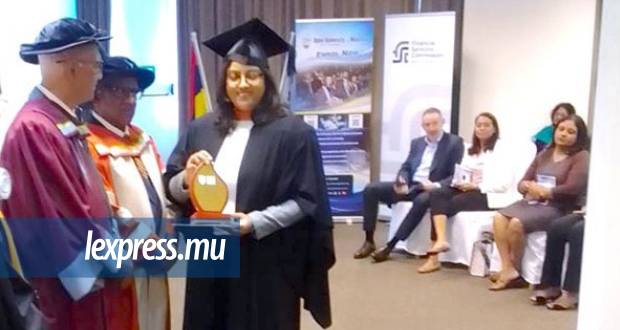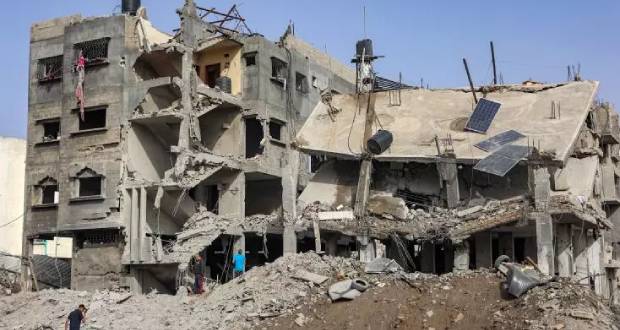Publicité
Driving urbanism through ethics and purpose: A call towards the adoption of new (and humane) principles
Par
Partager cet article
Driving urbanism through ethics and purpose: A call towards the adoption of new (and humane) principles

As firm believer in new urbanism principles, I propose these canons as time-honoured operating principles for addressing the stewardship of all land and the full range of human settlement: water, food, shelter and energy. They encompass, on a multi-scale level, urbanism, infrastructure, architecture, landscape design, construction practice and resource conservation.
● General
Human interventions in the built environment tend to be long lived and have long-term impacts. Therefore, design and financing must recognize long life and permanence rather than transience. City fabric and infrastructure must enable reuse, accommodating growth and change on the one hand and long-term use on the other. The economic benefits should be realized by investing in human settlements that both reduce future economic impacts of climate change and increase affordability. Patient investors should be rewarded by fiscal mechanisms that produce greater returns over the long term.
Truly sustainable design must be rooted in and evolve from adaptations to local climate, light, flora, fauna, materials and human culture as manifest in indigenous urban, architectural and landscape patterns.
Design must preserve the proximate relationships between urbanized areas and both agricultural and natural lands in order to provide for local food sources; maintain local watersheds; a clean and ready water supply; preserve clean air; allow access to local natural resources; conserve natural habitat and to guard regional biodiversity. Globally, human settlements must be seen as part of the earth’s ecosystem. The rural-to-urban transect provides an essential framework for the organization of the natural, agricultural and urban realms. Buildings, neighbourhoods, towns and regions should serve to maximize social interaction, economic and cultural activity, spiritual development, energy, creativity and time, leading to a high quality of life and sustainability.
● The Building and Infrastructure
The primary objective should be the design of new buildings and the adaptive reuse of older ones to create a culture of permanence with well-crafted, sound, inspired and beloved structures of enduring quality. Places should promote longevity and the stewardship of both our natural and man-made environments. Architecture and landscape design should derive from local climate, flora, fauna, topography, history, cultures, materials and building practice. Architectural design should derive from local, time-honoured building typologies. Building shells must be designed to be enduring parts of the public realm. Yet internal building configurations must be designed to be flexible and easily adaptable over the years.
The preservation and renewal of historic buildings, districts and landscapes will save embodied energy, as well as contribute to cultural continuity. Individual buildings and complexes should both conserve and produce renewable energy wherever possible to promote economies of scale and to reduce reliance on costly fossil fuels and inefficient distribution systems. Building design, configuration and sizes must reduce energy usage and promote easy internal, vertical and horizontal walkability. Approaches to energy design should include low technology, passive solutions that are in harmony with local climate to minimize unwanted heat loss and gain.
Renewable energy sources such as non-food source biomass, solar, geothermal, wind, hydrogen fuel cells and other nontoxic, non-harmful sources should be used to reduce carbon and the production of greenhouse gases. Water captured as precipitate, such as rainwater and that internally harvested in and around individual buildings, should be cleaned, stored and reused on site and allowed to percolate into local aquifers. Water usage should be minimized within structures and conserved through landscape strategies that mimic native climate, soil and hydrology.
Building materials should be locally obtained, rapidly renewable, salvaged, recycled, and recyclable and have low embodied energy. Alternatively, materials should be chosen for their durability, exceptional longevity and sound construction, taking advantage of thermal mass properties to reduce energy usage. Research and implementation of sustainable alternative constructions practices should contribute less to climate change and increase the livelihood of Small Island Developing States. Building materials should be nontoxic and non-carcinogenic with no known negative health impacts. Food production of all kinds should be encouraged in individual buildings and on their lots consistent with their setting in order to promote decentralization, self-sufficiency and reduced transportation impacts on the environment.
● The Street, Block, and Network
The design of streets and the entire right-of-way should be directed at the positive shaping of the public realm in order to encourage shared pedestrian, bicycle and vehicular use. The pattern of blocks and streets should be compact and designed in a well-connected network for easy, safe and secure walkability. This will reduce overall vehicular usage by decreasing travel time and trip length. Design should strive to minimize material and utility infrastructure. The positive shaping of the public realm should focus on creating thermally comfortable spaces through passive techniques such as low albedo and shading with landscape and buildings. The techniques should be consistent with local climate.
The design of the streets, blocks, platting, landscape and building typologies should all be configured for both reduced over all energy usage and an enhanced quality of life in the public realm. Roadway materials should be nontoxic and provide for water reuse through percolation, detention and retention. Green streets integrate sustainable drainage with the role of the street as defined public space. Their design should maintain the importance of the building frontage and access to the sidewalk and roadway, balancing the desirability of surface drainage with the need for street connectivity and hierarchy.
A wide range of parking strategies (such as park-once districts, shared parking, parking structures, reduced parking requirements, minimized surface parking areas and vehicle sharing) should be used to constrict the supply of parking in order to induce less driving and to create more humanscaled, amenable public space. Road safety should be emphasised by the harmonisation of signage posts, traffic signals, & speed cameras, and the regulation of private advertisements on public roads.
● The Neighbourhood, Town and City
The balance of jobs, shopping, schools, recreation, civic uses, institutions, housing, areas of food production and natural places should occur at the neighbourhood scale, with these uses being within easy walking distances or easy access to transit. Wherever possible, new development should be sited on underutilized, poorly designed or already developed land. Sites should be either urban infill or urban adjacent unless the building is rural in its program, size, scale and character.
Prime and unique farmland should be protected and conserved. In locations with little or declining growth, additional agriculture, parklands and habitat restoration should be promoted on already urbanized or underutilized land.
Neighbourhoods, towns and cities should be as compact as possible, with a range of densities that are compatible with existing places and cultures and that hew tightly to projected growth rates and urban growth boundaries while promoting lively mixed urban places.
Renewable energy should be produced at the scale of neighbourhood and town as well as at the scale of the individual building in order to decentralize and reduce energy infrastructure. Brownfields should be redeveloped, utilizing clean-up methods that reduce or eliminate site contaminants and toxicity.
Wetlands, other bodies of water and their natural watersheds should be protected wherever possible, and the natural systems which promote recharge of aquifers and prevent flooding should be restored wherever possible, consistent with the urban-to-rural transect and the desirability of urban waterfronts as public spaces of extraordinary impact and character. Natural places of all kinds should be within easy walking distance or accessible by transit. Public parklands and reserves should be protected and the creation of new ones promoted.
Within neighbourhoods, a broad range of housing types, sizes and price levels for a population of diverse ages, cultures and incomes can provide for self-sufficiency and social sustainability, while promoting compact cities and regions. A steady source of water and the production of a wide range of locally raised foods within an easily accessed distance establish the self-sufficiency and overall size of neighbourhoods and/or small towns. Nearby rural agricultural settlements should be promoted to preserve local traditional foods and food culture.
Projects should be designed to reduce light pollution while maintaining safe pedestrian environments. Noise pollution should also be minimized. The design of neighbourhoods and towns should use natural topography and should balance cut and fill in order to minimize site disturbance and avoid the import and export of fill.
● The Region
The finite boundaries of the region should be determined by geographic and bioregional factors such as geology, topography, watersheds, coastlines, farmlands, habitat corridors, regional parks and river basins.
Regions should strive to be self-sustaining for food, goods and services, employment, renewable energy and water supplies. The physical organization of the region should promote transit, pedestrian and bicycle systems to maximize access and mobility while reducing dependence on automobiles and trucks.
The spatial balance of jobs and housing is enabled at the regional scale by extensive transit systems. Development should be primarily organized around transit lines and hubs.
The siting of new development should prefer already urbanized land. If undeveloped land is used, then the burden for exceptional design, demonstrable longevity and environmental sensitivity should be more stringent and connections to the region should be essential.
Sensitive or virgin forests, native habitats and prime farmlands should be conserved and protected. Imperilled species and ecological communities should be protected. Projects to regenerate and recreate additional agricultural areas and natural habitat should be promoted. Wetlands, other bodies of water and their natural watersheds and their habitats should be protected. Development should be avoided in locations that disrupt natural weather systems and induce heat islands & flooding.
Publicité
Les plus récents






